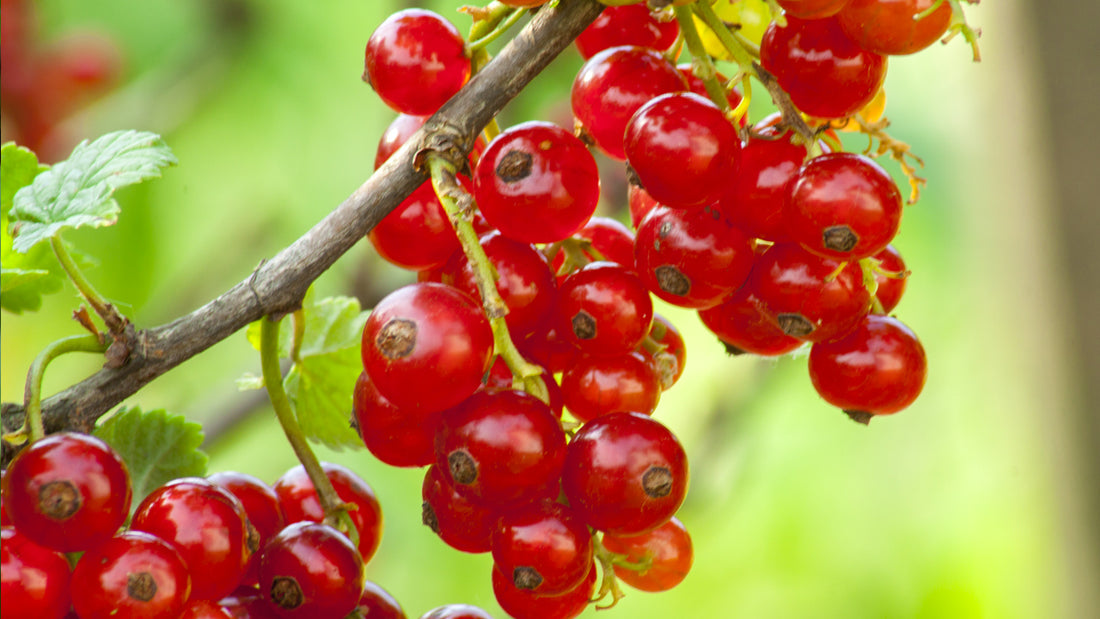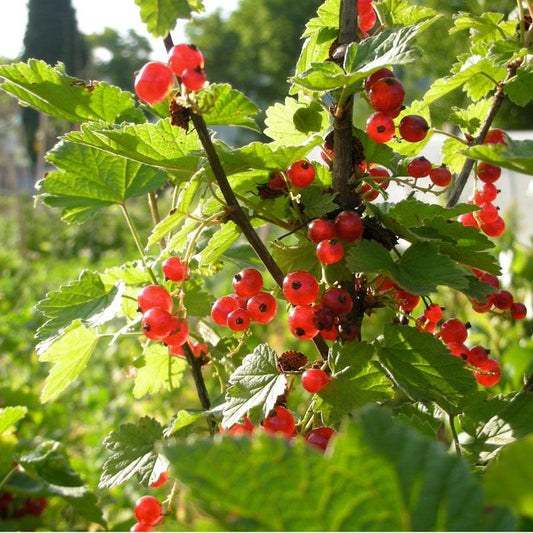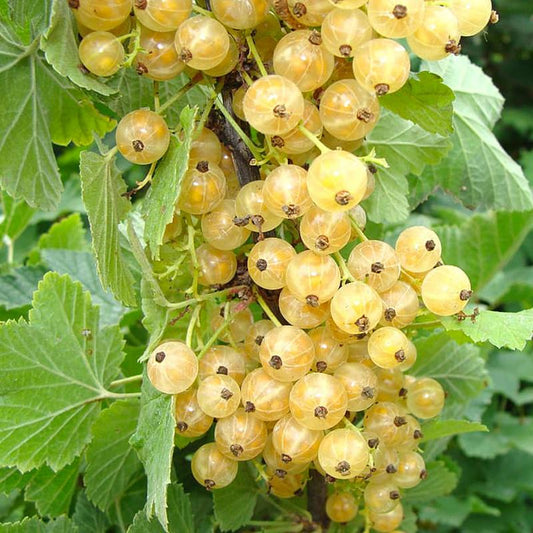The fundamental considerations and subtle nuances of growing and caring for currants are beyond the scope of this introduction to plant care. Please see our Resource Center where we offer additional instructional videos and articles, as well as our bookstore.
Cultural Requirements
Currant plants are enjoyed for their fruit, which is the main ingredient in currant jelly. Dried currants also make a popular snack. Black currants, white currants and red currants prefer full sun in cooler, humid areas with plenty of summer rain such as the Pacific Northwest and upper Midwest. All of these varieties can thrive in other areas across the country.
Currants are easy to grow and can tolerate a wide range of soils. Soil must be well-drained and relatively free of salts. Keep soil constantly moist but do not allow it to become too soggy.
Currants are long-lived plants and very winter hardy but do not like hot summers. If your summer temperatures are in excess of 90°F, plant on the north side of your house or building. Planting on the north side will also protect your currants from a late spring frost, by delaying bloom time. You can also plant in areas that get afternoon shade.
Heeling In
When your bare root currant plants arrive, open the plastic bags immediately. It is best to plant right away, within a week of delivery, however if you cannot plant right away, you may “heel in” the plants. This protects them and keeps them alive (but still dormant) until you are able to plant them in their permanent spot.
Outdoors: To heel in bare root plants outside, pick a location that is shielded from wind. Next, dig a trench for the berries about twice as deep as the roots are long. Place in the hole roots side down and cover the roots with soil or sand and gently tamp down to avoid air pockets. Check the root area from time to time, keeping the soil moist.
Indoors: To heel in bare root strawberries indoors, whether due to snow or a frozen ground, choose a cool place like a root cellar, basement, or garage. It is important to choose a place where the temperature stays between 38°F and 45°F. This is important so the roots neither freeze, nor does the plant break dormancy. Place the roots in a container with soil or sand and be sure to keep the root area moist.
Planting & Growing
Currant bushes can be planted in rows or trained as a simple espalier. If you choose to grow these as bushes, plant shorter cultivars, at least 3 feet apart in a row or 3 feet apart from neighboring plants. Plant further apart if you have selected larger cultivars.
Space multiple rows 7 or more feet apart. Set plants at least an inch deeper than they were grown in the nursery. Shallow plants are prone to drying out so err on the deep side. At planting time, cut young single-stemmed plants down to three or four buds, but no more.
If your plant has more than one stem, cut off all but the healthiest looking one.
The above ground portion of the plant must be balanced with the root system or the plant will suffer. Drip irrigation works best as it keeps the water off of the leaves and fruit.
Fertility
Currants love soil that is high in organic matter. If you have conducted a soil analysis, up to 5% organic matter is ideal. If you have low organic matter, add high-quality compost. Once the currants are planted, mulch the watering zone with several inches of compost each year.
Add a well-balanced organic fertilizer in the spring if your soil lacks nutrients. Do not over-apply nitrogen as this will cause excess vegetative growth and make the plant susceptible to mildew and insects. Never apply nitrogen after fruit has set.
Harvest
Currants are ready to harvest in early to midsummer, late June to mid July, for many cultivars in most of North America. For fresh consumption, allow berries to fully ripen on the plant.



